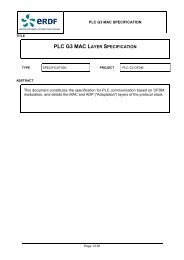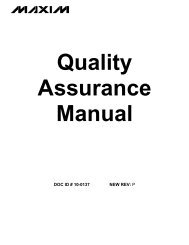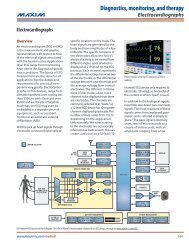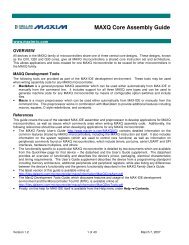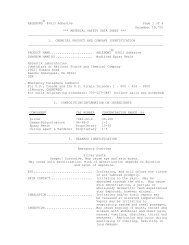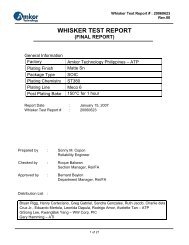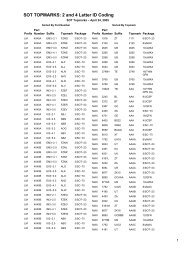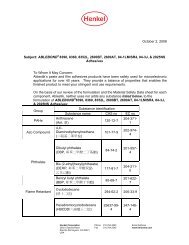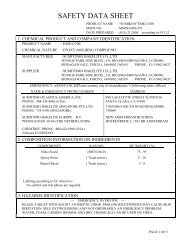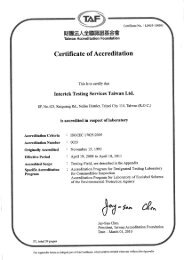MAXIM High-Speed Bipolar and BiCMOS Process Reliability Report
MAXIM High-Speed Bipolar and BiCMOS Process Reliability Report
MAXIM High-Speed Bipolar and BiCMOS Process Reliability Report
You also want an ePaper? Increase the reach of your titles
YUMPU automatically turns print PDFs into web optimized ePapers that Google loves.
RR-B3A<br />
Calculating Failure Rates <strong>and</strong> FITs<br />
The failure rate can be determined from the following four variables:<br />
A = The number of failure observed after test<br />
B = The number of hours the test was run<br />
C = The number of devices used in the test<br />
D = The temperature acceleration factor (see Appendix 1)<br />
Using data in Table 3, a failure rate at 25 °C can now be calculated:<br />
A = 49<br />
B = 192<br />
C = 22,850<br />
D = 9822 (Assuming Ea=0.8eV, <strong>and</strong> a test temperature of 150 °C.)<br />
Substituting:<br />
λ = 49/(192 x 22,850 x 9822) = 1.13x10 -9 per hour<br />
Expressing this in terms of the FIT rate:<br />
λ = 1.13 FITs<br />
To determine the FIT rate at a new temperature, the acceleration factor (D) must be recalculated from the<br />
Arrhenius equation given in Appendix 1.<br />
Including Statistical Effects in the FIT Calculation<br />
Because a number of failures observed from a reliability test sample is usually small, there is a statistical<br />
likelihood that the actual failure rate may be higher or lower than the raw value calculated above. We<br />
therefore can calculate the failure rate for any given required confidence level. Common confidence<br />
levels are 60%, or 90%. We are usually concerned with determining the upper confidence level, or<br />
“UCL.” The 60% UCL expresses the highest failure rate that would be found rate 60% of the time, based<br />
on a r<strong>and</strong>om sample from the Chi-square distribution.<br />
The failure rate calculation, including a confidence level, is determined as follows:<br />
λ = χ 2 /2DH<br />
where:<br />
χ 2 = the Chi square value<br />
2DH = 2 times the total device hours<br />
= 2 x ( B x C x D)<br />
The Chi square distribution may be found from st<strong>and</strong>ard statistical tables. The Chi-square distribution<br />
has as parameters the degrees of freedom (df) <strong>and</strong> the confidence fraction. The degrees of freedom is 2<br />
x (failures +1). In the example above, the number of degree of freedom is df = 2 x (49+1) = 100. If we<br />
desire a 60% UCL, the tabulated Chi square value found under the values of (1-60%)=0.40 <strong>and</strong> 100<br />
degrees of freedom is 102.5. Therefore, the failure rate found using a 60% confidence level is:<br />
λ = 102.5/(8.61 x 10 10 )= 1.18x 10 -9<br />
or:<br />
λ = 1.18 FITs<br />
Referring to Table 3, one can see that for Maxim’s products, to a 60% confidence level, we find the<br />
estimate that 1.18 units will fail per billion (10 9 ) device-hours of operation at 25 °C.<br />
Page 30 of 30




